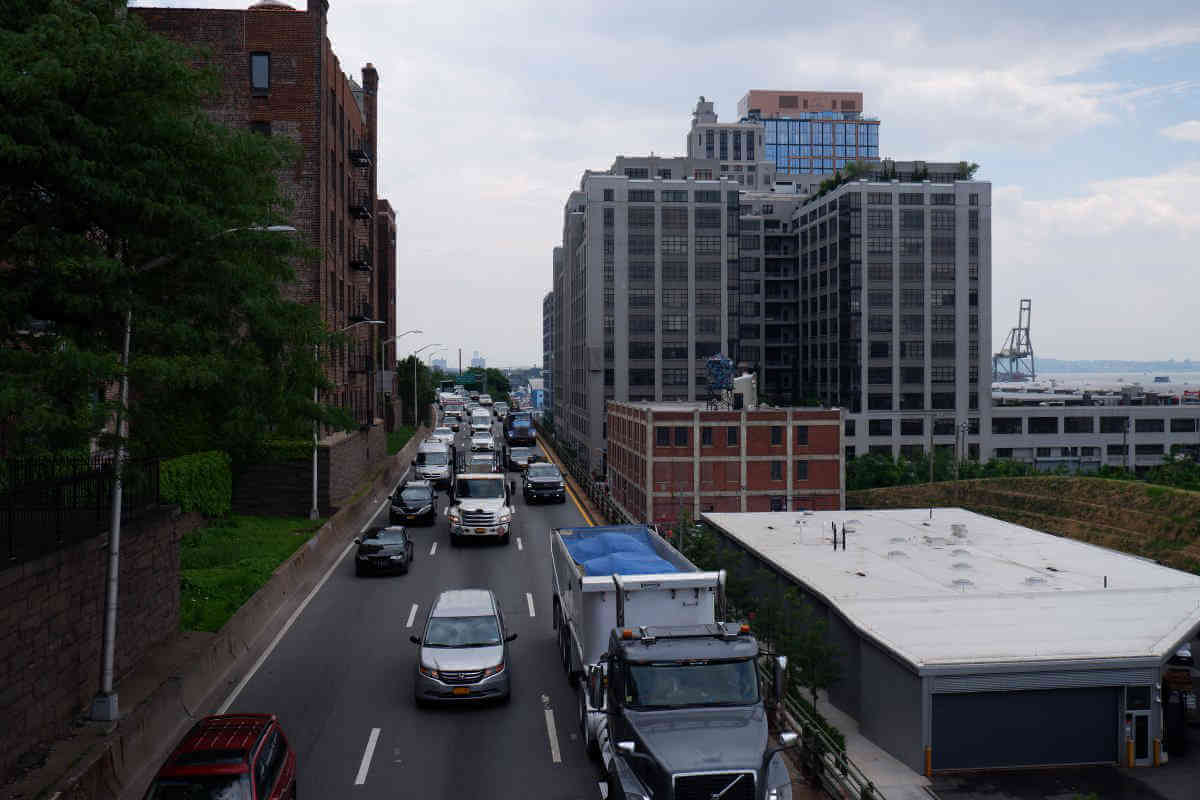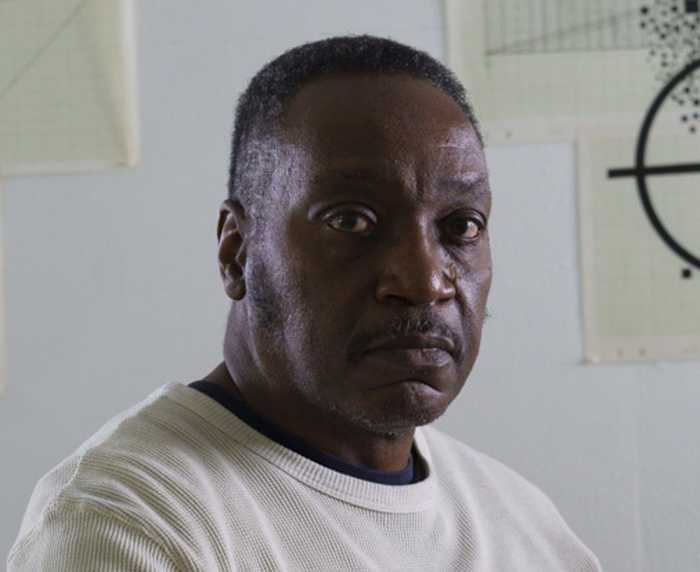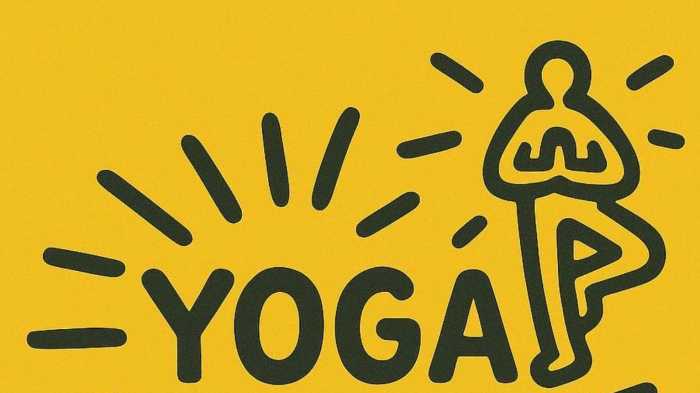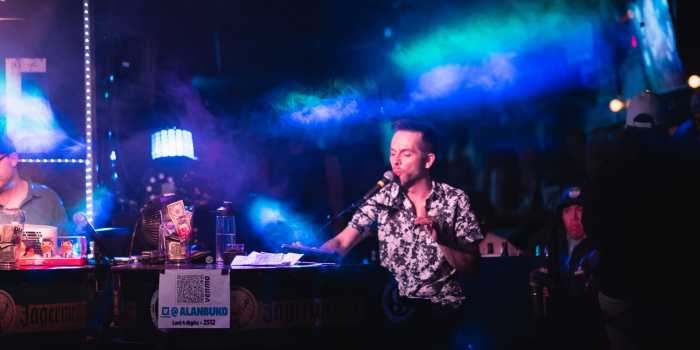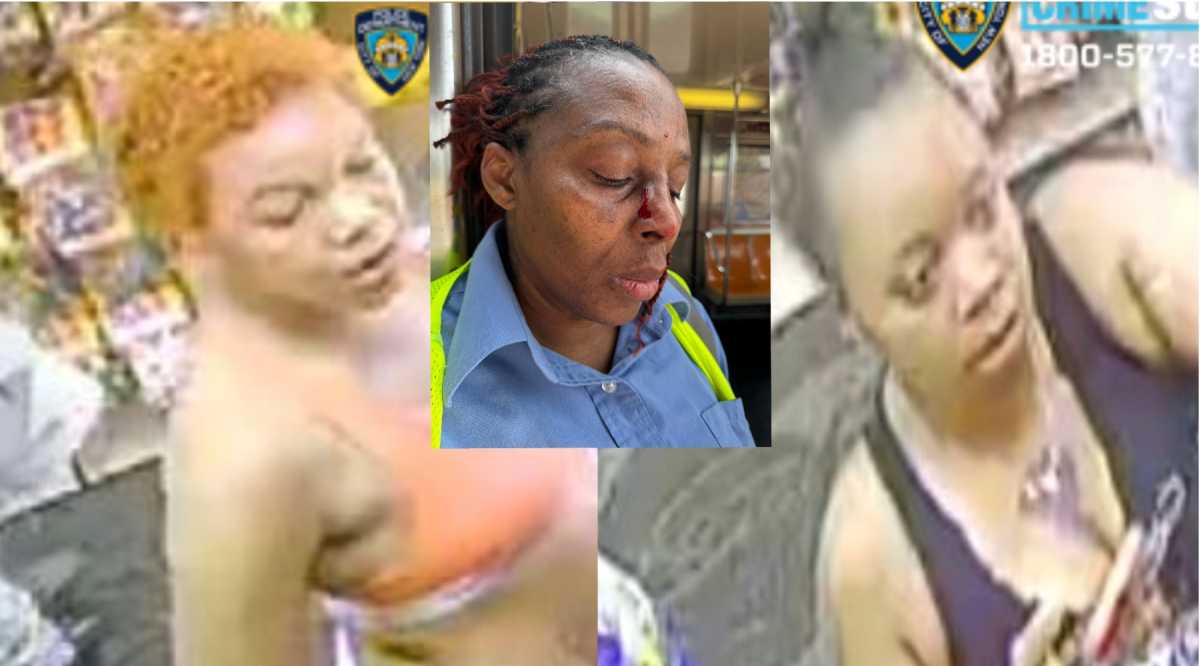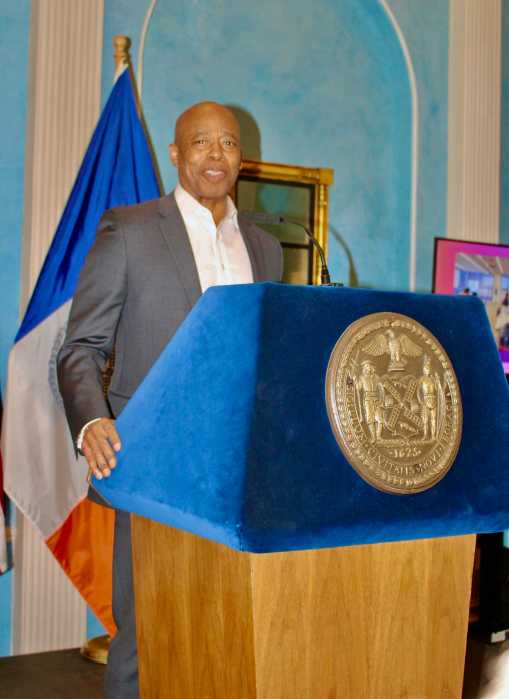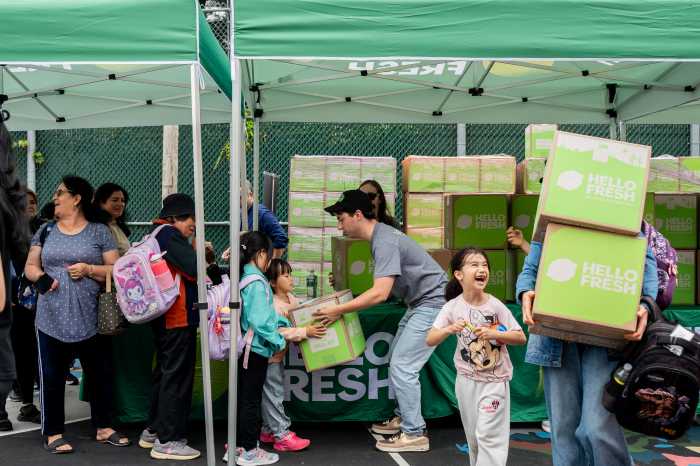Mayor Bill de Blasio’s expert panel released their final report on the beleaguered Brooklyn-Queens Expressway on Thursday — recommending a reduction in traffic lanes and an immediate start to construction on the crumbling thruway, which could become unsafe within five years, according to the brain trust’s head.
“The frightening truth is the triple cantilever section of the BQE is in dire condition and sections may become unsafe within the next five years,” said Carlo Scissura, who chairs the 17-person panel de Blasio convened in April.
The panel released their 72-page report after more than nine months of studying the issue, but ultimately punted on providing an actual fix for the 1.5 mile cantilevered section of the roadway — instead recommending another working group, this time comprising city, state, and federal officials, along with community stakeholders, to come up with a finalized plan for the entire BQE.
“A truly transformative plan is urgently needed – one that does not focus solely on 1.5 miles of a 20-mile corridor but reimagines the entire road from Staten Island to Brooklyn to Queens,” Scissura’s statement continued. “This panel calls on our city, state and federal governments to work together and begin this critical process immediately.”
In the meantime, officials need to reduce the Robert Moses-era roadway’s lanes from three to two in either direction — turning the eliminated lane into a 10-foot painted buffer to discourage vehicle traffic and to extend the BQE’s life span, the report says.
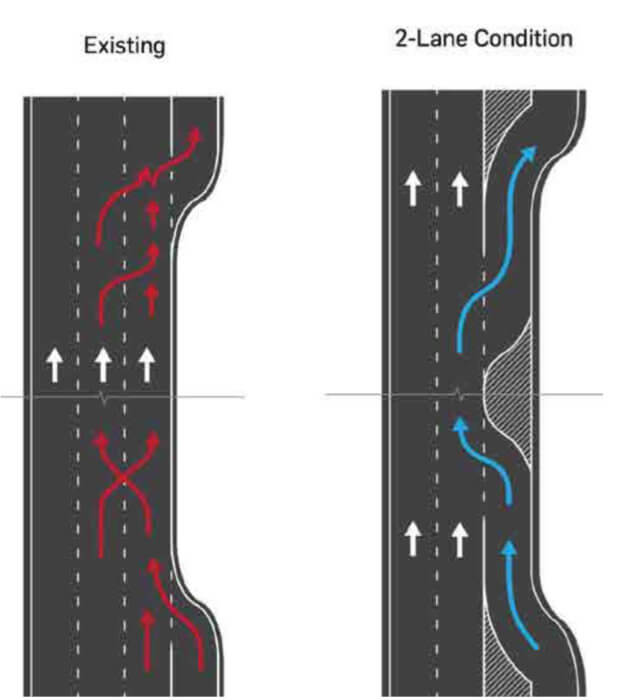
A whopping 150,000 vehicles use the BQE everyday, including more than 15,000 trucks — as the interstate highway provides a vital freight corridor.
The recommendations — which were aimed at averting impending disaster on the rapidly deteriorating roadway — were originally supposed to be released last summer, and a draft of it leaked to Politico on Jan. 9.
The report rejects the many more innovative approaches, such as building a temporary highway above the current BQE during construction, or tunneling car lanes beneath the roadway — calling those proposals either too costly or too disruptive to surrounding communities.
Those alternate plans surfaced after Brooklyn Heights residents shot down the city’s proposal to build a temporary highway on their beloved promenade in September 2018.
The more modest proposal released this week calls for the city’s Department of Transportation to discourage traffic by closing or restricting some of the ramps leading on and off the BQE, diverting some vehicles to the Williamsburg Bridge, and allowing small trucks to utilize the Belt Parkway.
The city also needs to immediately start fixing the triple-cantilever and work with city and state police to up enforcement to keep oversize trucks from using the roadway — which cause disproportionate damage to the structure, along with limiting other heavy trucks.
The report also advocates for officials to expand an array of public transportation alternatives along the BQE corridor to divert traffic from the highway, thereby extending its lifespan as much as possible — including a longer and more frequent G-train, and express service along the D, R, and F lines.
The panel also endorsed the mayor’s recently-revived $2.73 billion trolley known as the BQX, saying it provides “an inexpensive and reliable alternative” in the area, along with the Bay Ridge-to-Bronx Triboro line, expanded express bus service, and a new ferry stop at Sunset Park’s Pier 4.
In an effort to divert some of the harmful freight traffic, the panel proposed construction of the nearly $10 billion Cross Harbor Freight Tunnel that would link freight trains in Bay Ridge and New Jersey. Another alternative included carrying more freight loads on barges across the city’s waterways.
Other measures to curb traffic include the in-the-works split two-way tolling on the Verrazzano Bridge and congestion pricing for traffic going into Manhattan, which would make travel through the Brooklyn Battery Tunnel a more economical option.


